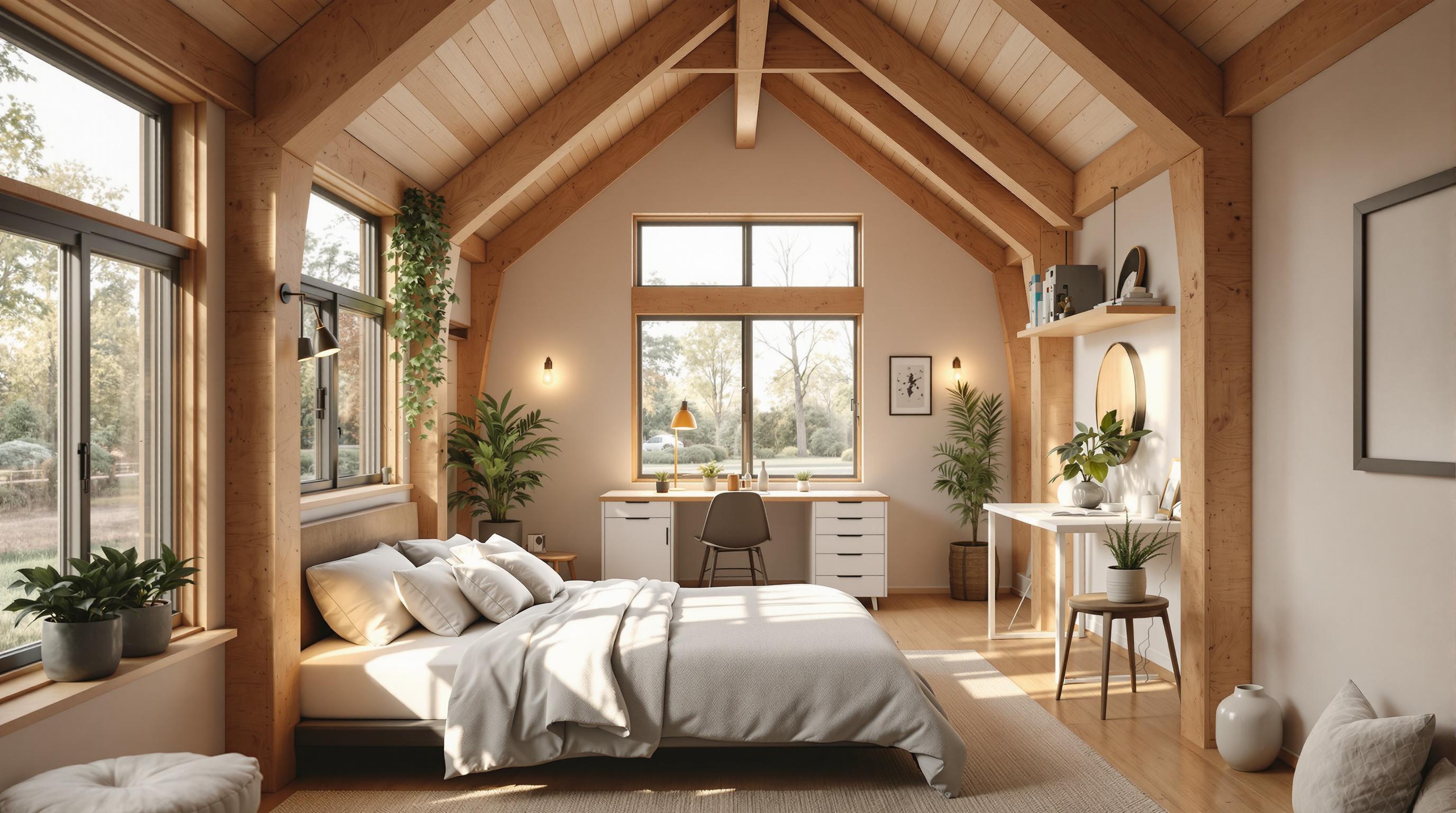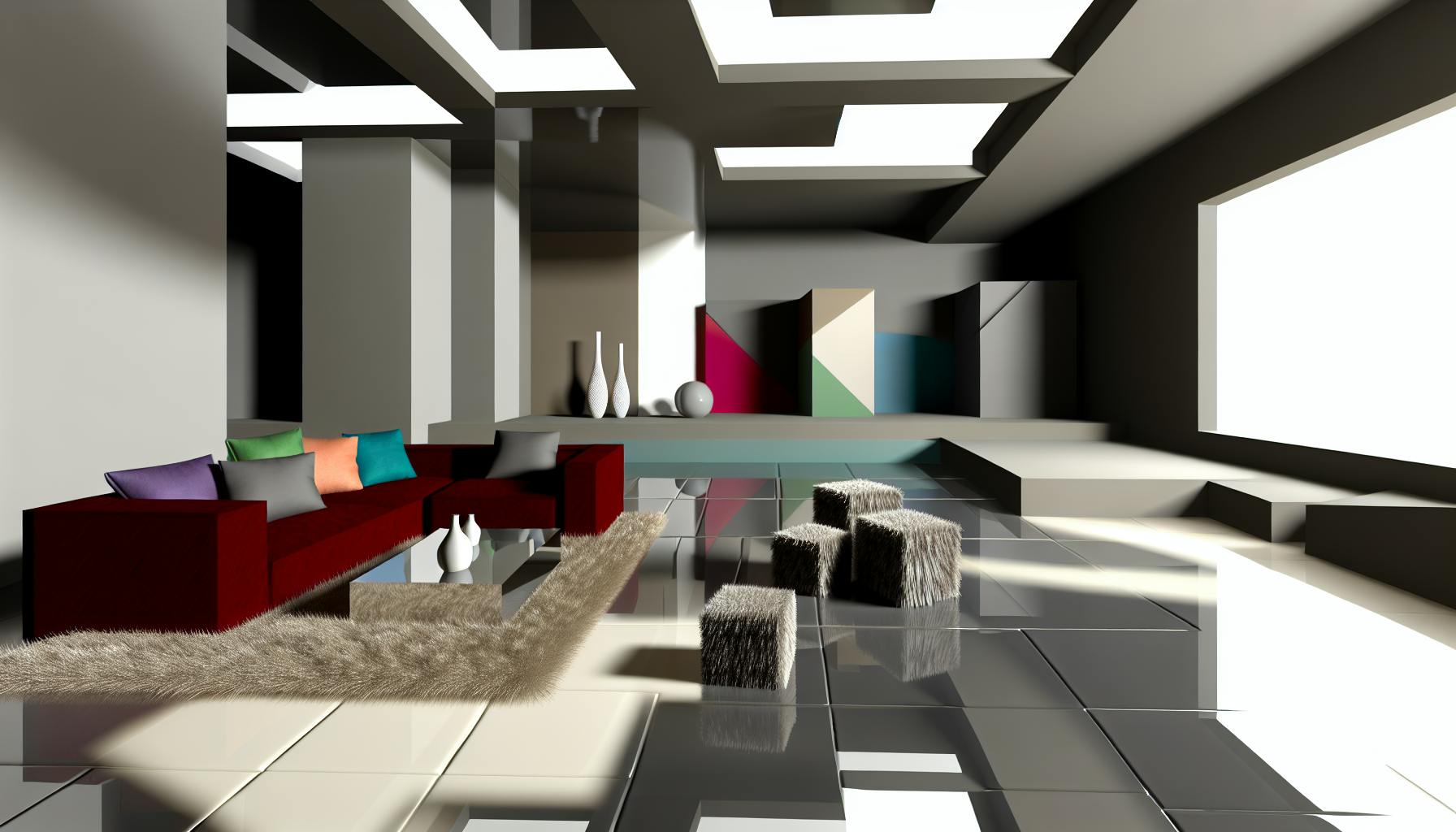Tiny farmhouses blend rustic charm with modern efficiency. Here's what you need to know:
- Size: Under 400 sq ft
- Cost: Plans range from $395 to $1,345
- Key features: Open layouts, natural light, smart storage, outdoor spaces
Why people love them:
- Cheaper to build and maintain
- Smaller environmental impact
- Potential for mobility (some on wheels)
- Possible rental income
4 main aspects of tiny farmhouse design:
-
Rustic aesthetic
- Reclaimed wood
- Simple color palette
- Textured walls (e.g., shiplap)
-
Efficient space use
- Multi-purpose furniture
- Vertical storage
- Hidden compartments
-
Sustainable design
- Solar panels
- Reclaimed materials
- Eco-friendly building materials (e.g., hempcrete)
-
Indoor-outdoor living
- Screened porches
- Outdoor furniture
- Lighting and plants
| Feature | Benefit |
|---|---|
| Small size | Lower costs, easier maintenance |
| Rustic elements | Charming aesthetic |
| Smart storage | Maximizes limited space |
| Eco-friendly options | Reduces environmental impact |
| Outdoor living areas | Expands usable space |
Tiny farmhouses offer a simple, cost-effective living solution with a country twist. They're perfect for minimalists who want to save money and reduce their environmental footprint.
Related video from YouTube
1. Rustic Aesthetic
Tiny farmhouse plans often embrace a rustic look that's both charming and practical. Here's how to nail it:
Reclaimed Wood
Old timber adds character. Think barn doors for space-saving style. They look great and have a story to tell.
Colors: Keep It Simple
Go for whites, beiges, and grays on walls. Then, spice it up with natural blues and greens. Want a bold exterior? Try white with black trim.
Textures That Pop
Bring nature inside. Use shiplap or planked walls to add depth. A board and batten feature wall can create interest without overwhelming your space.
"Farmhouse style leans into nostalgia, character pieces and cozy charm." - Sarah Symonds, Grace in My Space blogger
2. Efficient Space Use
Tiny farmhouses need smart space tricks. Here's how to make every inch count:
1. Multi-Purpose Furniture
Get furniture that does double duty. Think a Murphy bed that's also a sofa. It's like having two rooms in one!
2. Go Vertical
Use your walls. Corner shelves above doors? Perfect. Or how about a loft space? It's like adding an extra room without expanding your footprint.
3. Hide Your Stuff
Secret storage is your friend. Under-floor compartments or stair shelving can stash your stuff out of sight.
Here's a quick look at these space-savers:
| Solution | What It Does | Cool Example |
|---|---|---|
| Multi-Purpose Furniture | Does two jobs at once | Bed that's also a sofa |
| Vertical Storage | Uses wall space | Corner shelves, loft space |
| Hidden Storage | Hides clutter | Under-floor storage, stair shelving |
sbb-itb-1be9014
3. Sustainable Design
Tiny farmhouses can be eco-friendly powerhouses. Here's how to make your small space green:
Solar Power Punch
Solar panels are perfect for tiny roofs. They can cut your energy use by 40-75% compared to regular houses, saving you $2,000-$3,000 yearly. That's a lot of cash for a little roof!
Reclaimed Wood Wonder
Old wood gets a new life in your tiny farmhouse. Use it for floors, walls, or furniture. It's cheaper than new lumber and adds a rustic touch. Check out places like the Architectural Salvage Warehouse of Detroit for materials.
Hempcrete Haven
This mix of hemp, water, and lime is cool stuff. It's non-toxic, insulates well, and captures more CO2 than it releases during production. Oh, and it's fire-resistant and mold-proof too.
| Material | What's Good | Money Saved |
|---|---|---|
| Solar Panels | 40-75% less energy use | $2,000-$3,000/year |
| Reclaimed Wood | Less waste, more character | Cheaper than new lumber |
| Hempcrete | Eco-friendly, great insulation | Lower energy bills |
These options aren't just good for the planet - they're good for your wallet too. Win-win!
4. Indoor-Outdoor Living
Want to make your tiny farmhouse feel bigger? Turn your porch into an outdoor living room. It's a smart way to add space without expanding your home's footprint.
Here's the game plan:
1. Screen it in
Keep the bugs out and the comfort in. Plus, your furniture stays protected.
2. Make it cozy
Add outdoor-friendly furniture. Think rocking chairs, a porch swing, or a small table set. Bonus points for pieces that fold or stack.
3. Light it up
Install outdoor lighting for after-dark use. Solar-powered options? Even better.
4. Go green
Bring in potted plants. Herbs or small veggies can double as a mini garden.
5. Weatherproof it
Choose materials that can handle whatever Mother Nature throws at them. But play it safe - bring cushions and delicate items inside when the weather turns nasty.
This outdoor room isn't just extra space. It's your new spot for morning coffee, evening chill time, and everything in between. It's a simple trick to make your tiny farmhouse feel not so tiny.
| Feature | What it does |
|---|---|
| Screened porch | Keeps bugs out, protects furniture |
| Outdoor furniture | Adds comfort and function |
| Lighting | Lets you use the space after dark |
| Plants | Brings nature closer, possible food source |
| Weather-resistant materials | Keeps your outdoor space lasting longer |
Conclusion
Tiny farmhouse plans pack a big punch. Here's why:
| Benefit | Description |
|---|---|
| Save money | Tiny homes: $23,000-$60,000. Regular homes: $233,400 |
| Cut bills | Keep $478 more each month |
| Go green | Slash greenhouse gas emissions by 36% |
| Simplify life | Less cleaning, more living |
It's not just hype. 56% of people would consider tiny living. Why? It's about more than just saving cash.
Think about it:
- Less space = less junk
- Lower costs = more experiences
- Smaller footprint = bigger environmental impact
Want to try it out?
1. Book a tiny Airbnb for a weekend
2. Declutter one room at a time
3. Find tiny house plans that fit you
Tiny living isn't for everyone. But for some, it's a game-changer. As Shayne Hodgkin, a tiny house builder, says: "I'm a minimalist who feels best when my impact on the environment is light."
So, ready to shrink your space and grow your life?


